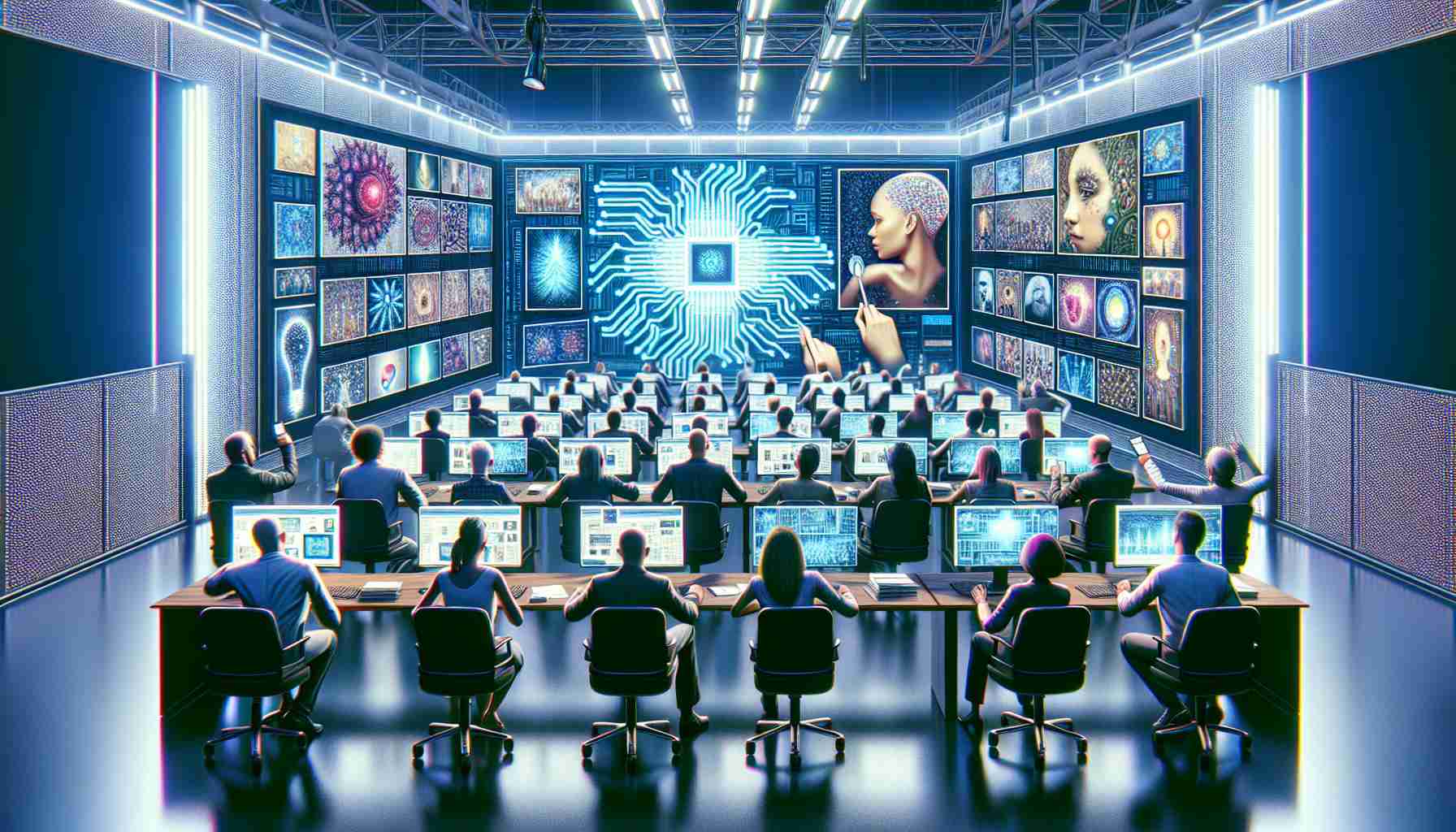The rise of AI-generated images has taken the internet by storm, with an estimated 20 billion such images flooding the digital landscape since 2022. These images range from fake depictions of individuals uploaded without their consent to politically motivated misinformation aimed at distorting the truth. In this era of rampant fake news, social media giants and online platforms have been grappling with the need to address this growing problem.
In response to the challenge, Meta, the parent company of Facebook, Instagram, and Threads, has announced its commitment to developing tools that can identify AI-generated images. These tools will aid in distinguishing between genuine and synthetic content, ultimately providing users with greater transparency and understanding of the technology behind the images they encounter.
Nick Clegg, President of Global Affairs at Meta, emphasized the importance of establishing clear boundaries as the line between human and AI-generated content becomes increasingly blurred. Users have expressed their desire for transparency, especially as they encounter AI-generated content for the first time. Through the implementation of image tags on its social platforms, Meta aims to meet this demand and uphold industry standards. These tags will be accompanied by explanatory information and will be available in multiple languages.
Although Meta’s efforts are praiseworthy, the battle against AI-generated images is far from won. Determined individuals will undoubtedly attempt to bypass tagging technology, necessitating a continued search for innovative ways to identify and monitor such content. Meta also envisions engaging users in this fight by encouraging them to report any AI-generated content they come across. By harnessing the power of collective vigilance, Meta hopes to stay one step ahead of those who seek to exploit AI for malicious purposes.
As deepfake technology continues to advance, the challenge of distinguishing real from fake becomes increasingly complex. Recent instances of AI-generated images, such as the fake Taylor Swift images and the slideshow depicting Prince William and Prince Harry, serve as poignant reminders of the potential harm caused by synthetic content. By addressing this issue head-on, Meta and other companies are laying the groundwork for trust and control over the content that permeates our digital lives.
The fight against AI-generated images is an ongoing battle, but with a collaborative approach, innovative technology, and user involvement, it is a battle that can be won.
An FAQ on AI-Generated Images
Q: What are AI-generated images?
A: AI-generated images are images created using artificial intelligence technology, without the need for human involvement.
Q: What is the impact of AI-generated images on the internet?
A: AI-generated images have flooded the digital landscape, with an estimated 20 billion such images since 2022. They range from fake depictions of individuals to politically motivated misinformation.
Q: What is Meta’s response to the challenge of AI-generated images?
A: Meta, the parent company of Facebook, Instagram, and Threads, has committed to developing tools that can identify AI-generated images. These tools aim to distinguish between genuine and synthetic content, providing users with greater transparency.
Q: How does Meta plan to address user demand for transparency regarding AI-generated content?
A: Meta plans to implement image tags on its social platforms. These tags will accompany AI-generated images and provide explanatory information. They will be available in multiple languages.
Q: What are Meta’s expectations from users in the fight against AI-generated images?
A: Meta encourages users to report any AI-generated content they come across. By involving users and harnessing collective vigilance, Meta hopes to stay ahead of those who exploit AI for malicious purposes.
Q: Is the battle against AI-generated images over?
A: No, the fight against AI-generated images is ongoing. Determined individuals will continue to seek ways to bypass tagging technology. It requires continuous innovation and monitoring to address the challenge effectively.
Q: What are some recent instances of AI-generated images?
A: Examples include fake images of Taylor Swift and a slideshow featuring Prince William and Prince Harry. These instances highlight the potential harm caused by synthetic content.
Q: How can the battle against AI-generated images be won?
A: With a collaborative approach, innovative technology, and user involvement, the battle against AI-generated images can be won. Companies like Meta are laying the foundation for trust and control over the content on the internet.
Definitions:
AI-generated images: Images created using artificial intelligence technology without human involvement.
Deepfake technology: Technology that uses AI to manipulate or fabricate audio and visual content, often creating realistic but fake videos or images.
Suggested Related Links:
– Meta: Official website of Meta, the parent company addressing the challenge of AI-generated images.
– Forbes: An article on AI-generated images and the development of deepfake technology.
– YouTube: A video explaining AI-generated images and their implications.
The source of the article is from the blog elperiodicodearanjuez.es

